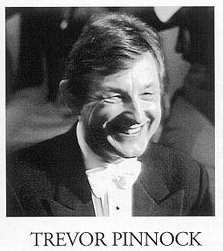A complete surprise!
Not The Messiah, so the Circle and Balcony at the Barbican were closed, and those brave people prepared to try something different were contained easily in the Stalls. A lengthy oratorio with a seemingly a limited scenario, cast for five solo singers, who double for the short choruses to end each act, Handel's Oratorio per la Resurrezione di Nostro Signor Gesu Cristo (HWV 47) turned out to be one of the most exciting concerts of early music experienced in many a year. I'd never come across it, nor had a leading music writer who told me beforehand that it was 'early' Handel and that was all he knew about it!
This little known masterpiece was composed in Rome for performance at Easter 1708, commissioned by Marchese Ruspoli to impress the Pope with no expense spared. Opera had been banned but spectacular oratorios became opera in all but name. The commission specified elaborate staging and decoration was lavish and the large orchestra was based upon 40 strings, led by Corelli, with wind. Before a huge painted backdrop Lucifer disputed Christ's redemptive powers with an Angel and the two Marys with St John lamented Christ's death and anticipated his promised resurrection, exulting when that came to pass. That is about all.
 Trumpets
herald the Angel's demand that Christ be admitted through the gates of Hell,
Lucifer protests, Handel responding with vivid and original orchestration
and a stream of melody which characterise the protagonists in the conflict,
and those on earth who pass from mourning to hope and exultation. The young
composer, about 23, flexes his composing muscles and glories in his virtuosity
and imagination, giving each of his singers great opportunities to make their
marks.Many of the arias have dance rhythms in which Trevor Pinnock revelled
with visible pleasure, conducting from the harpsichord.
Trumpets
herald the Angel's demand that Christ be admitted through the gates of Hell,
Lucifer protests, Handel responding with vivid and original orchestration
and a stream of melody which characterise the protagonists in the conflict,
and those on earth who pass from mourning to hope and exultation. The young
composer, about 23, flexes his composing muscles and glories in his virtuosity
and imagination, giving each of his singers great opportunities to make their
marks.Many of the arias have dance rhythms in which Trevor Pinnock revelled
with visible pleasure, conducting from the harpsichord.
The Marys mourn to veiled flutes, muted violins and gamba; at the entrance to the tomb Mary Magdalene laments with a solo viola da gamba and violin alone; Lucifer falls into the abyss two octaves down; Christ's mother describes meeting the risen Christ to dancing oboes with solo violin and viola da gamba. All these opportunities were well taken to maximum effect by Pinnock's expert team.
The five singers were ideally cast and strongly differentiated. Nancy Argenta clear as a bell as the Angel, Lynne Dawson warm and emotionally involving as the Magdalene, Michael George a trenchant Lucifer. Benjamin Butterfied, a distinguished Canadian tenor now based in Holland, impressed as St John and Robin Blaze confirmed that he is in the forefront of British counter tenors. An inspiriting evening, with all the elements combining and no weaknesses at all.
Unexpectedly, I find that there are four recordings in the current catalogue. Nancy Argenta is featured with Amsterdam Baroque Orch./Koopman (Erato 0630-17765-2); Michael George in the Harmonia Mundi set with Philharmonia Baroque Orch./McGegan (HMA190 7027). There are versions by Musiciens du Louvre/Minkowski (Archiv 447 767-2AH2) and by Academy of Ancient Music/Hogwood, with Emma Kirkby (L'oiseau Lyre 443 200-2OM). They would be hard pressed to displace the memory of Pinnock's account of La Resurrezione at the Barbican.
Peter Grahame Woolf
 Return to:
Return to: